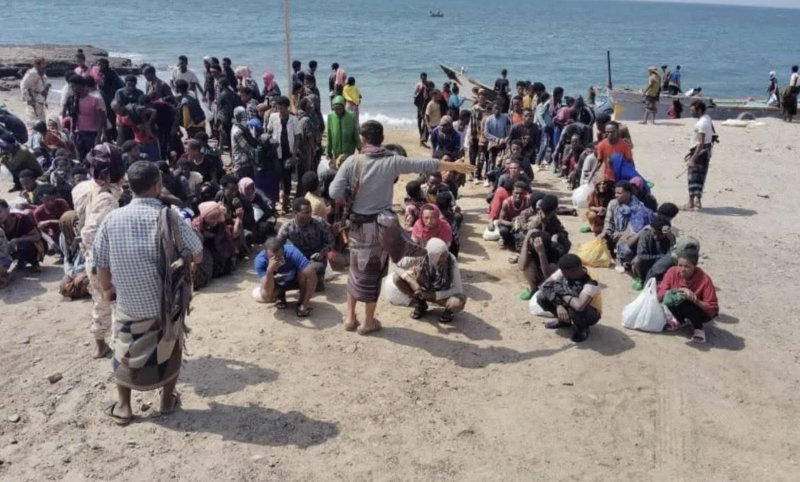Al-Shabaab Alliance With Yemen's Houthis Continues To Grow


In 2024, a United Nations monitoring team reported that the relationship between Somalia’s al-Shabaab terrorist group and Yemen’s Houthi rebels was “transactional or opportunistic, and not ideological.”
In a 2025 report, the U.N. said those ties are deepening and pose a growing security threat to the Horn of Africa and Red Sea regions.
“The flow of weapons from Yemen to al-Shabaab-controlled areas in Somalia continued,” the February 6 report stated. “Between June to September (2024), al-Shabaab received assorted arms, ammunition and explosives through the ports of Marka and Baraawe in [Lower] Shabelle.
“The weapons were assessed to have been used in attacks against the African Union Transition Mission in Somalia camps in [Lower] Shabelle in September and November.”
Somali President Hassan Sheikh Mohamud has blamed the Iran-backed Houthis, also known by the name Ansar Allah, for the proliferation of weapons that has fueled al-Shabaab’s resurgence in recent months. The Somali National Army has experienced a frustrating roller coaster of highs and lows in its ongoing battles for territory with the al-Qaida-linked terrorists.
Al-Qaida in the Arabian Peninsula (AQAP) established a nonaggression pact with the Houthis in 2022 and has worked increasingly with them on weapons transfers and to coordinate attacks against Yemeni government forces since 2024.
With some facilitation from al-Qaida global and AQAP, the alliance between al-Shabaab and the Houthis emerged pragmatically from international weapons smuggling between Somalia and Yemen. The Gulf of Aden separates the countries by just 280 kilometers in some parts.
“For Ansar Allah, Somalia’s porous coastlines have become critical to ensuring that the group has access to Iranian supplies and Chinese equipment necessary for the growth of its Iranian-supported drone and missile program,” analysts Ibrahim Jalal and Adnan al-Jabarni wrote in a March 14 report for the Carnegie Middle East Center.
Compared to the weaponry al-Shabaab typically has used such as assault rifles, mortars and improvised explosive devices, the Houthis provide access to more advanced systems, including weaponized drones and surface-to-air missiles.
In return, al-Shabaab has shared its coastal intelligence network and years of expertise in piracy with the Houthis. An uptick in maritime attacks has bolstered both groups’ finances, fueling conflict on both sides of the Gulf of Aden.
“Cooperation with al-Shabaab and AQAP has provided the Houthis with more access to the Arabian Sea and Western Indian Ocean,” the Africa Center for Strategic Studies wrote in a May 28 article.
“Al-Shabaab’s network of fighters, sympathizers and smugglers across Somalia and northern Kenya, moreover, offers the Houthis more opportunities to get arms shipments (many of which have come from Iran) out of the Indian Ocean and into coast-hugging skiffs or overland to the Gulf of Aden where they may have a better chance of reaching Yemeni shores.”
Another sign of the groups’ increasingly complex relationship came in 2024, when AQAP sent more than a dozen al-Shabaab operatives to Yemen for drone warfare training to expand the Somali group’s tactical capabilities, according to the U.N. monitoring group’s February 2025 report. The U.N. group also noted AQAP’s launch of a communications application that has enabled exclusive messaging with al-Shabaab.
Reports from the semiautonomous state of Puntland in northeastern Somalia suggest that the Houthi rebels have established bases in the Golis Mountains along the Sanaag region coast.
“Houthis are believed to operate missile development facilities in the Golis Mountains,” Maj. Abdirahman Warsame, the former commander of Somalia’s elite Danab Special Forces, wrote in an April 10 article for Hiiraan Online. “There was a missile test reportedly launched by Houthis from Harshaw in Sanaag to Taleh in the Sool region — a distance of 459 kilometers.
“Houthis in the Golis Mountains conceal their identity, impersonating al-Shabaab militants to mislead and intimidate the local populace. This tactic is intended to prevent resistance from local communities, who may otherwise oppose their presence.”
With the groups working together to boost their finances, technology and operational capacity, experts are urging governments throughout East Africa to work together to counter the growing instability they bring to the Horn of Africa, Red Sea and Gulf of Aden.
“Given that both militant groups are well entrenched in their respective host countries, significantly degrading this threat will require more than maritime action,” the Africa Center recommended. “Sustained efforts to reduce each group’s territorial control will also be needed as these land bases have provided the platforms from which the nonstate actors have been able to launch attacks at sea, expand their revenue flows, and build their military capacity.”

Aden — Security sources have revealed that dozens of irregular African migrants landed on the shores of Shabwa governorate in southeastern Ye…

Washington – Yemen has been ranked among the world’s top 20 countries experiencing the highest levels of political and deadly violence…

Aden – The operations room of the Saudi-funded Masam demining project announced that its field teams have successfully removed 2,656 landmine…